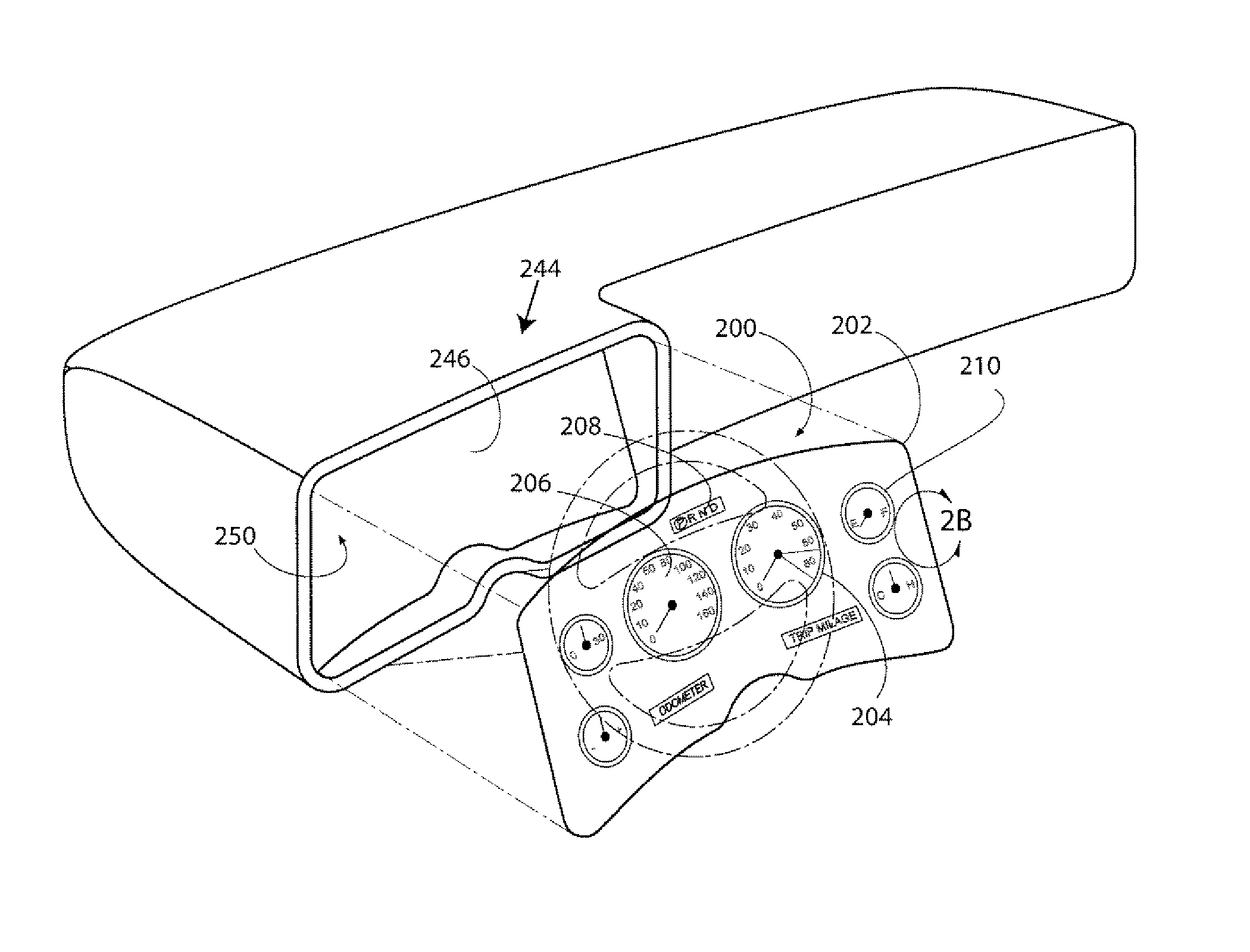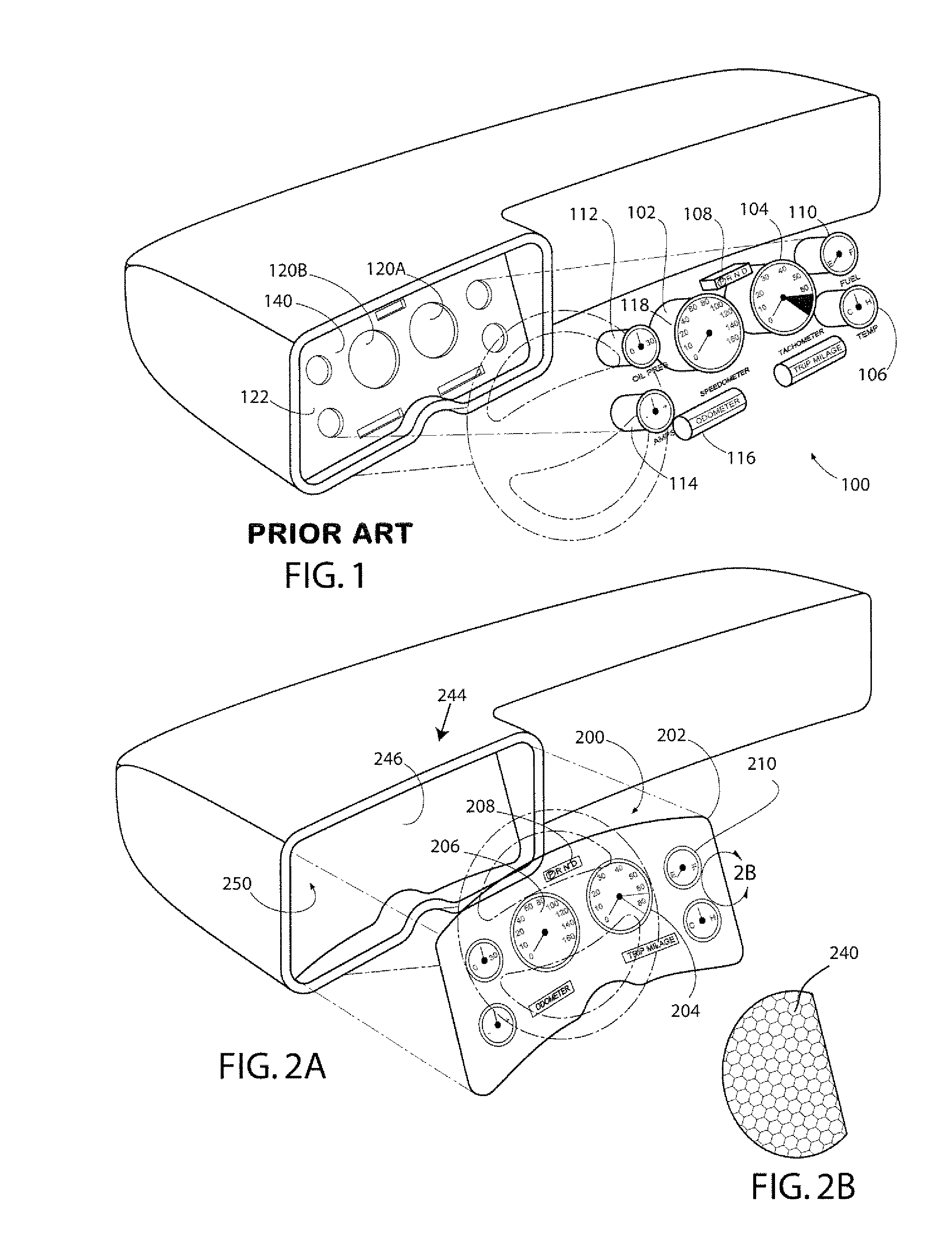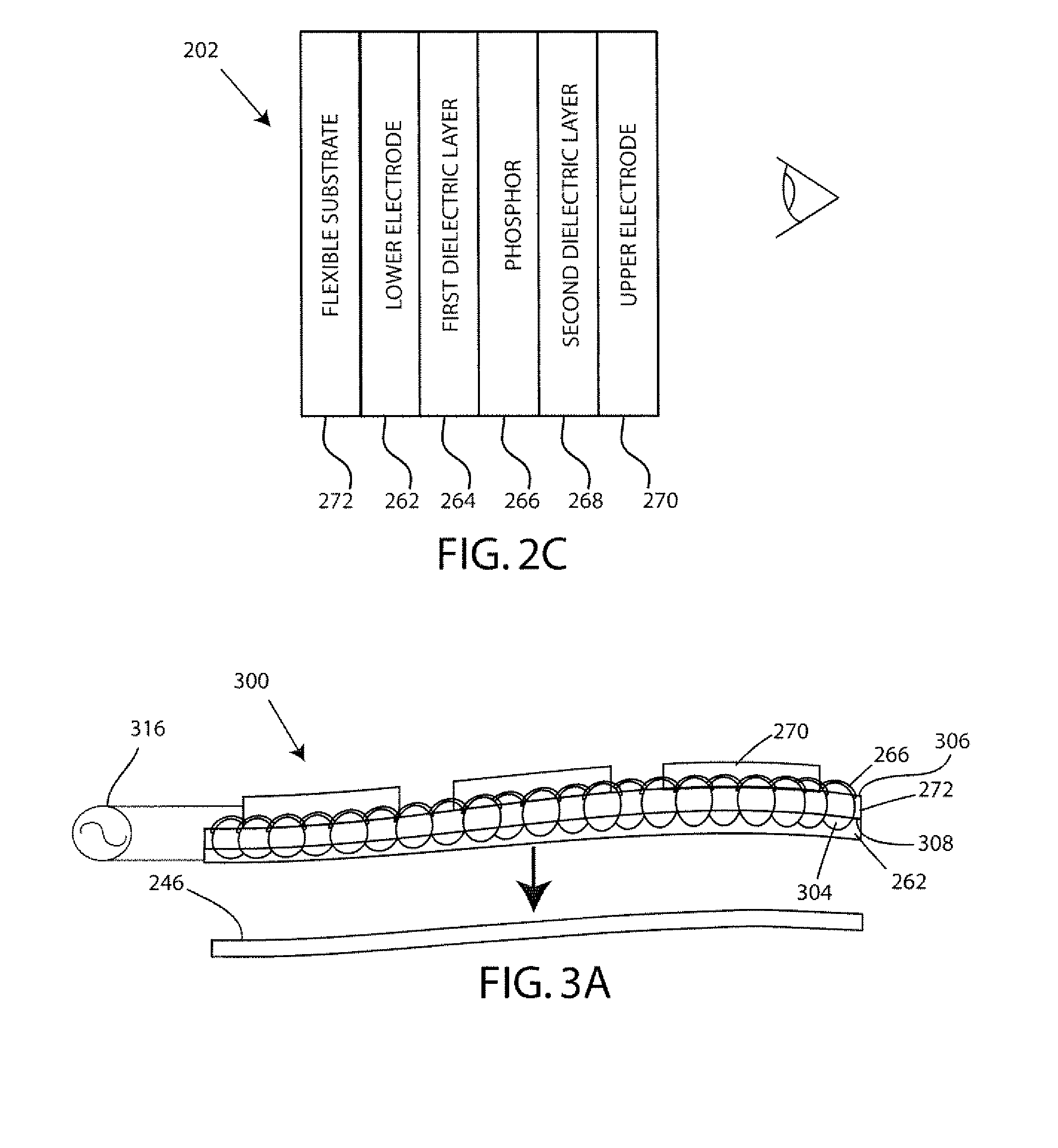While fit for its intended purpose, this prior art instrument panel has several drawbacks.
First, installation of such a panel is complex and
time consuming, requiring individual gauges to be installed in the base panel 122.
The inflexibility of the base panel 122 limits the points in the
assembly line process in which the base panel 122 can be installed, and makes handling and installation of the base panel 122 difficult.
In addition, the base panel 122 typically occupies valuable space that could potentially be used for other purposes.
Furthermore, the instrument panel 100 is not easily changed or updated, as changes to the instrument panel 100 typically require updating the base panel 122 and / or the gauges.
A further
disadvantage of prior art instrument panels is the limited display characteristics.
This fixed arrangement of prior art gauges often results in unused space.
However, prior art addressable displays have several drawbacks which have limited their use in vehicles.
First, addressable displays tend to be expensive, and many are of insufficient quality or brightness for use as an instrument panel.
In addition, addressable displays, such as LCDs, tend to be rigid and planar, making them difficult to incorporate into the non-planar surfaces found in most vehicles.
Furthermore, addressable displays tend to be heavy, resulting in decreased vehicle performance, and bulky, taking up valuable space in a vehicle
cockpit.
Many addressable displays, such as LCDs, also require large light sources for backlighting, which can generate undesirable heat levels.
Still further, many addressable displays have power requirements which are too high for use in most vehicles.
Thus, the use of addressable displays in vehicles has generally been limited to one or two small displays, such as an automobile navigation display that is not located in the main instrument panel.
Tubidis has the
disadvantage of using an additional rigid substrate for mounting the display on a vehicle surface.
Another challenge facing vehicle instrument panel designers and manufacturers is providing an increasing amount of available data to a vehicle operator in an efficient and user-friendly way in the limited space of a vehicle.
While fit for its intended purpose, that patent adds another layer of complexity to the instrument panel as well as an additional display to the vehicle.
Another
disadvantage of the prior art instrument panel is its lack of customization.
For example, even a relatively minor change to an instrument panel
layout can require re-working a base panel and / or gauges which may take months to complete.
Presently, the two of these users cannot be accommodated by a single instrument panel.
Modifying or updating a prior art instrument panel is thus a difficult and time-consuming task that may take a manufacturer a year or more to accomplish, hampering the ability of vehicle manufacturers to quickly update vehicle models.
There have been some recent attempts to provide some degree of user-customizability to instrument panels but these attempts have been limited to minor attribute changes such as changing the brightness or color of a gauge by installing additional lighting.
As previously mentioned, LCDs have several undesirable qualities such as their rigidity, flatness, heat, power requirements and weight which make it difficult to form an integrated vehicle instrument panel.
While fit for their intended purposes, these prior art displays generally only offer customization of the color or brightness of the gauges.
They do not address other display characteristics such as the size, shape, or location of the gauges or the instrument panel itself.
Another disadvantage of the prior art instrument panel is its inability to change display characteristics dynamically in response to an event such as the vehicle's operation.
This static gauge arrangement fails to address the fact that the relevance of a particular gauge may change due to the occurrence of an event.
But like the other prior art discussed above, the Lys device teaches changing the color and perhaps brightness of light associated with a gauge, it does not teach or disclose changing other characteristics of an instrument panel such as changing the size, location, shape, and the additional attributes of a gauge.
 Login to View More
Login to View More  Login to View More
Login to View More 


